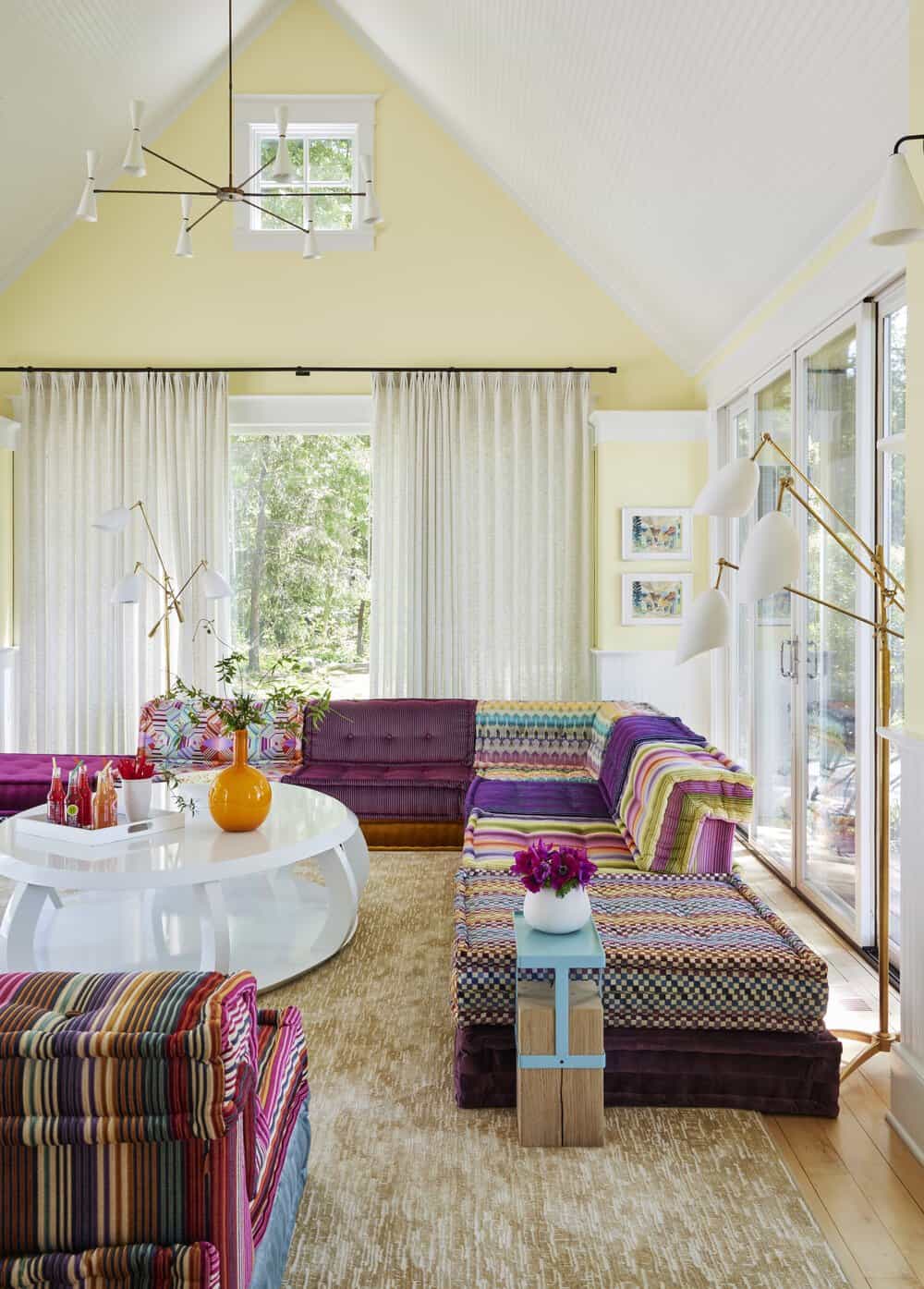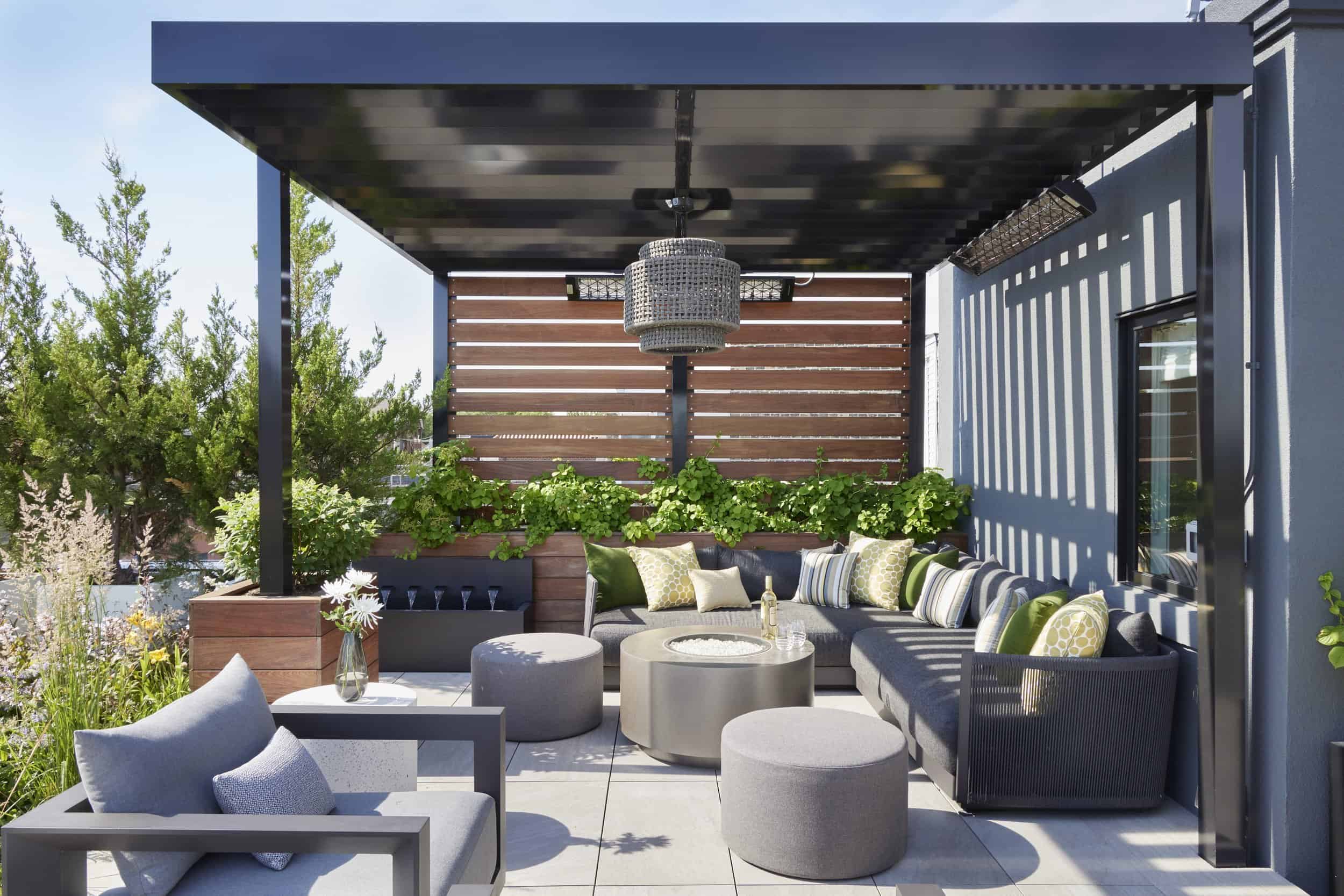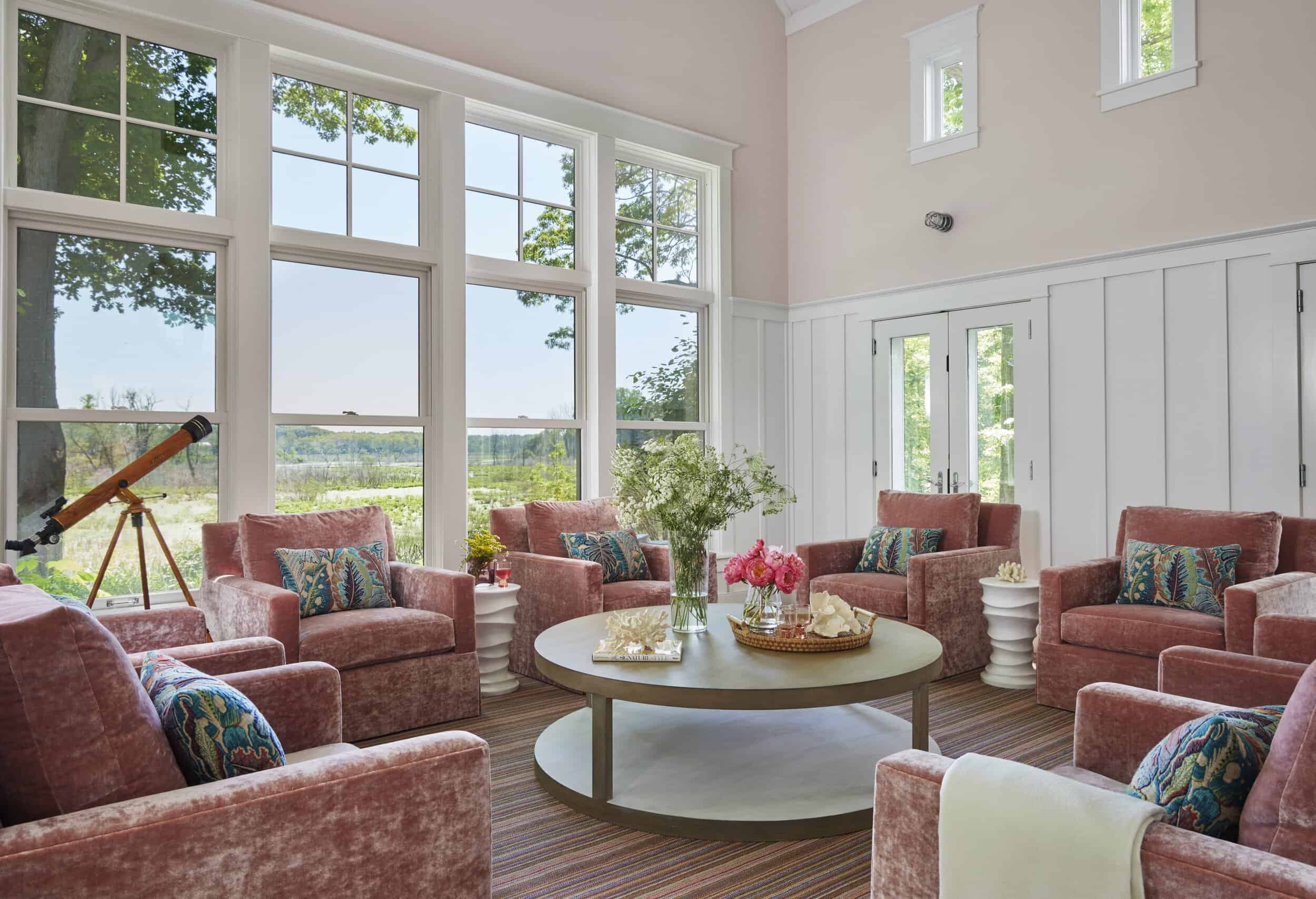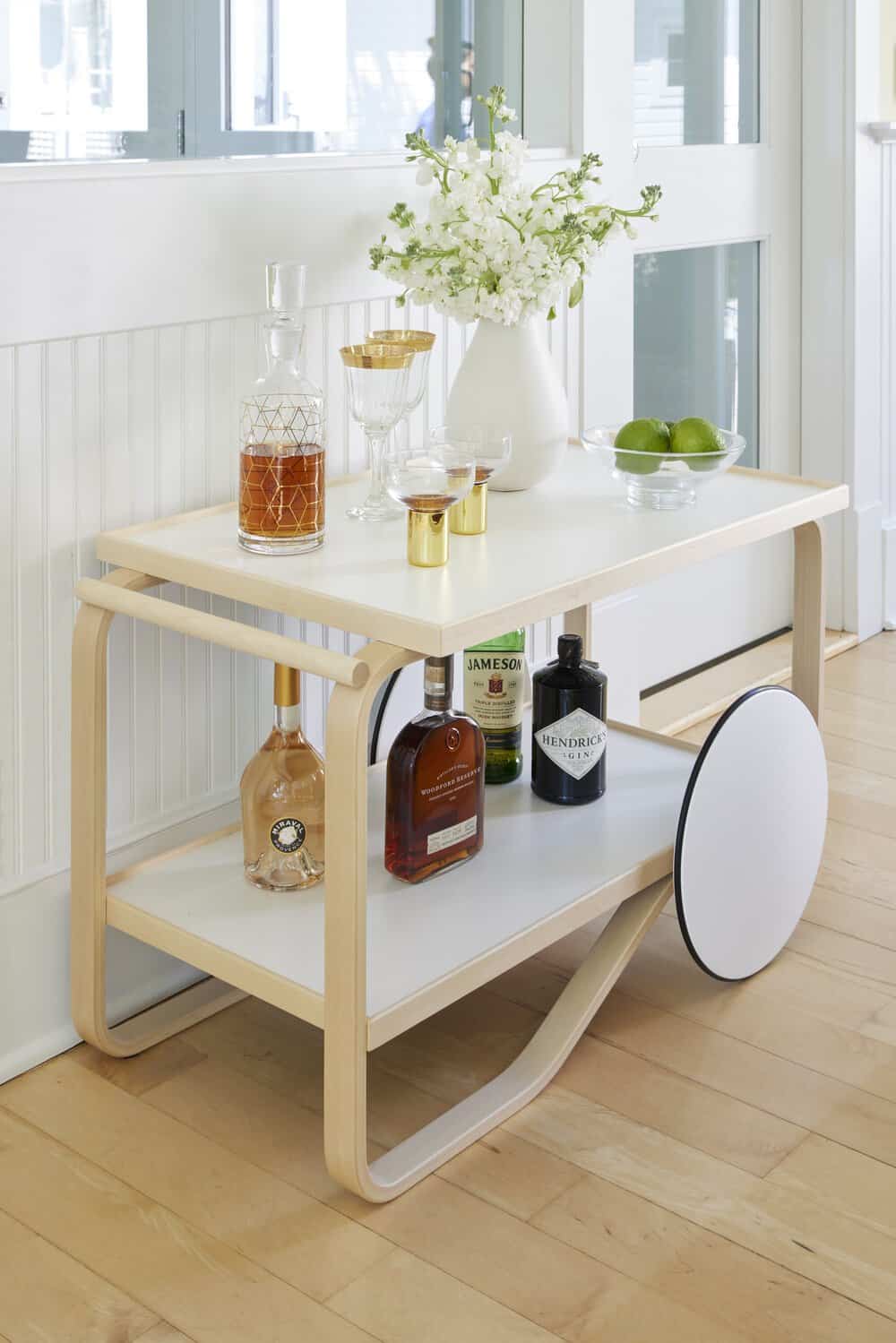Marrying two of my favorite things: travel and design… Let’s talk vacation homes.
Depending on their vacation style, vacation homeowners I work with are usually looking for a relaxing getaway, a place to host and entertain, or a mix of all the above. No matter the end goal, one thing’s for sure: designing a vacation home often allows for a little more fun with the design that you might feel hesitant about for your main homestead. Here, I’m sharing a few of my tips and strategies for designing a getaway my clients deserve.

First, Think About How the Home Will Be Utilized
What’s needed in a vacation home is all dependent on the main goal for the new abode. Before picking out color schemes or browsing vendors for new pieces, I always first ask clients how they’ll be using this space. If they’re planning on hosting and entertaining in this space with a multitude of guests, we’ll be sure to focus on spaces like the dining room and entertaining outdoor areas (or maybe even a great room, loft, or basement).
If the purpose of the space is to serve as a retreat for the homeowners themselves, I’ll focus on designing the bedrooms, bathrooms, and living spaces in a way that encourages a relaxing experience while also bringing the family together in the main areas such as the living room and kitchen.

Consider Adding Luxe Touches — But Don’t Neglect the Essentials
For many years, second homes were seen as an escape — but since the pandemic, there’s been a shift to clients working from any location. So, let’s not forget to incorporate necessities that would typically be excluded from a vacation home, such as a home office, home gym, large kitchens, mudrooms, and –– quite frankly — all the spaces that a main home would typically have.
While we’re including more practical elements than ever before, a vacation home is still a space to enjoy elements that you normally wouldn’t in your main home. For example, outdoor spaces are the perfect place to get that much-needed R&R time. If your new vacation home offers warmer weather, take advantage of that by including an outdoor kitchen or an outdoor family room. Additionally, most second homes offer open floor plans to create communal cooking, eating, and living spaces where the whole family can gather.

Don’t Be Afraid to Experiment
When designing a vacation home, this is the time to really experiment with design elements you’ve been dying to try but maybe felt a bit shy to incorporate into your main home. When it comes to myself or my clients, I love adding anything bold — patterned tiles in the bathrooms, textured fabrics on upholstered pieces, bright wallpaper (and I even like to mix patterns and colors). You can also go bold with unique furniture or even out-of-the-ordinary seating arrangements. A seating plan like the one shown above may seem out of place in your normal living room or family room, but in an environment meant to produce connection and conversation, it’s just the right setup.

Remember to Make it Just as Inviting as a Main Residence
While we want to get experimental and fun, we don’t want to forget that a vacation home needs to still feel just as welcoming and warm as your actual home. With that in mind, there are a few things to be conscious of when designing an inviting second home. A lack of natural light can make things feel stuffy and unwelcoming — so if the home you purchased doesn’t come with as many windows as you’d like, this might be a main point of investment. Adding more windows will not only increase the natural light in your home but will also let the outdoors inside so you can still enjoy that aspect of your vacation even while indoors.
Most importantly, consider what design elements and aesthetics make you feel the most at home. If you feel most comfortable in a simple, minimalist design, don’t go crazy with the colors and decor, and vice versa if you enjoy a more maximalist design approach. At the end of a long beach day or a hike through the mountains, be sure you’re coming home to a design that feels familiar to you.
Overall, a vacation home is a space you can make your own while taking some design risks you might’ve been too scared to try in your mainstay. Don’t be afraid to take those risks while staying true to your personal taste to ensure this space is truly a home away from home, but be conscious of and honest about your intent for the home. At the end of the day, it will serve as an oasis that you and your loved ones should treasure for years to come.

